In ORCYS universities, research institutions, ministries, NGO's and local companies from Namibia and Germany cooperate with a common goal: Find ways to make wildlife-based land-use sustainable.
Under the light of local knowledge ORYCS uses a broad set of research technics including field observations, experiments, remote sensing and mathematical modelling.
Students are an essential part of ORYCS. Tandem-research projects, a PhD teaching program and summer schools will bring together students from different parts of the world.
Our list of peer reviewed articles is continuously growing. Have a look into our list of publications showing already many of the projects findings. Since the project produced so much data the list will grow further.
As a result of the final workshop, ORYCS members created in a collaborative review process the ORYCS Factsheets which summarise some major findings from the project.
Visit our tumblr BLOG to get some impressions from our final workshop and some of the projects work over the past years.
After almost 4 years of research ORYCS came to an end in January 2023. We have all lived and worked under unusual and often difficult circumstances for the past couple of years, and we undoubtedly still are. Nevertheless, we managed to gather some fascinating and original data on wildlife and savanna ecosystems in Namibia. As one result of our final workshop in Namibia, we report some major findings and discuss their implications in 15 factsheet. You find them here. We are hopefully looking into the future of wildlife ecology and management in southern Africa and are gratefull for the knowledge we gained, the friends we became, the support we experienced and the opportunities we took.
A real-life Conservation Travel series,
documenting the current real time behind the
scenes life of active conservation in Namibia,
putting CONSERVATION FIRST.
Episode 38 and the following feature ORYCS work.
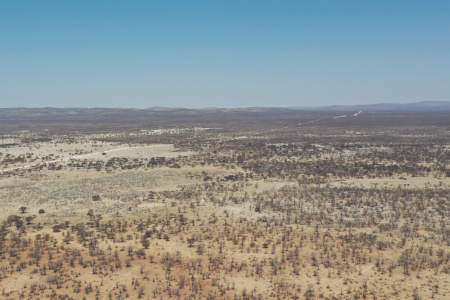
Namibian savannas are hot spots of climate, land-use and socio-economic change that function as model-region for many savannas worldwide. Increasing temperatures, changing amounts and distribu- tions of precipitation, rising levels of atmospheric CO 2 together with intensifying land-use threaten the functioning of these sensitive ecosystems and thus the livelihood of thousands of households who depend on a sustainable provision of multiple ecosystem services (e.g. water provision, forage production, biodiversity and tourism). Maladapted land management increases the risk of land degradation and loss of ecosystem services by disrupting the regulating functions of complex feedbacks between geo- and biosphere, for example between herbivores, vegetation, soil, water and carbon. Already today much of Namibia’s rangelands are in an alarmingly degraded state (e.g. 31.5% of Namibia’s land surface suffers from bush encroachment) with concomitant impacts on the national economy including the tourist industry, and observed increases in poverty levels. Thus, new land-use options that are better adapted to changing environmental conditions are urgently needed.
One recent important development is a widespread change from domestic livestock production towards wildlife-based management strategies. In Namibia, in addition to National Parks, currently about 35% of the land surface is dedicated to wildlife-based management thereof 20% in 79 communal conservancies and 15% on freehold conservancies and private game farms. Applications for the approval of further conservancies are currently under revision. Not only the identification of the economic value of wildlife management (e.g., trophy hunting, game meat production, eco-tourism) has led to this change, but wildlife-based land use options have been strongly supported by National policies such as the National Rangeland Policy or Namibia’s 2nd National Biodiversity Strategy and Action Plan 2013-2022. Key reasons for this policy support are the predicted potentials and benefits of wildlife management to conserve key ecosystem services including biodiversity and indigenous knowledge, to reduce land degradation for example through shrub encroachment, and the higher adaptive capacity of native herbivores to unfavourable conditions as compared to livestock.
In principle, these potential advantages would make wildlife-based land use an ideal option for adaptive management under regional and global climate change. Surprisingly, however, the predicted positive effects have never been put to thorough scientific scrutiny, even though many conservancies and commercial wildlife ranches have been operating for almost 20 years. In fact, many game farms exhibit a poorer savanna rangeland quality and lower species diversity than neighbouring livestock farms and wildlife-based management often seems to be poorly adapted to local conditions.
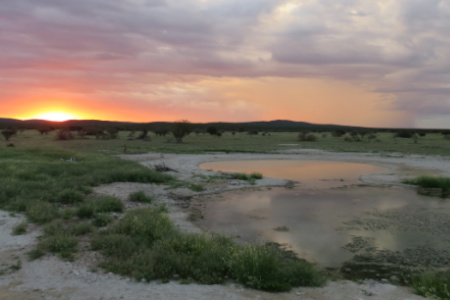
Given this background, the overarching key objective of ORYCS is to provide the first, urgently needed, scientifically rigorous assessment of wildlife-based land use options in Namibian savannas that can be extrapolated to similar savanna systems worldwide. In ORYCS we use the traditional definition of wildlife i.e. large, wide-ranging and undomesticated animal species. We specifically focus on endemic large herbivores with different feeding patterns (Mountain zebra, Plains zebra, Kudu, Oryx and Eland antelopes) and human-wildlife conflict species (elephants and large predators such as lions and leopards) that have a high intrinsic value and are vital to Namibian savannas. By understanding and aiming to improve wildlife-based management options, ORYCS contributes to better protect all other biodiversity of plants and smaller animal species that shelter under the canopy of selected wildlife.
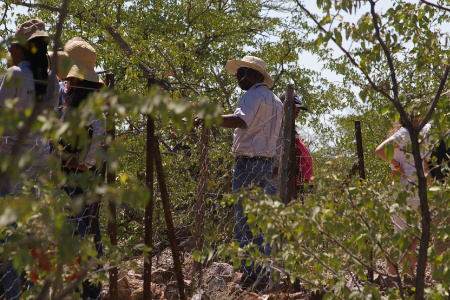
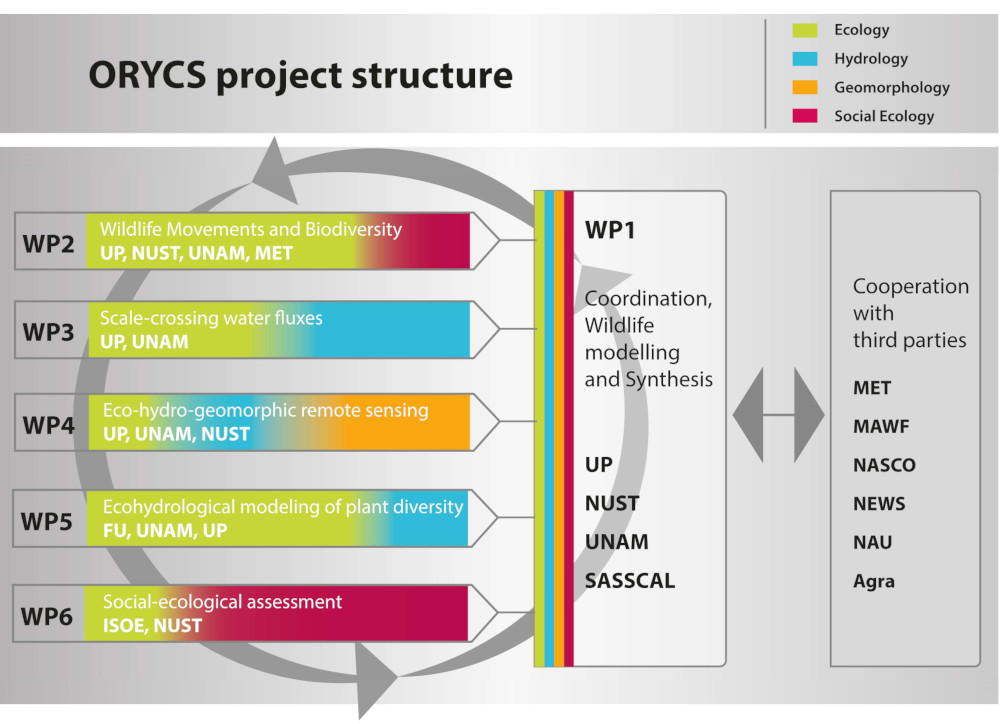
ORYCS is structured in six workpackages (WP1-6). WP1 is the overarching workpackage and coordinates ORYCS. WPs are centered on the main scientific tasks of the project and interlinked to each other in several ways reflecting the interdisciplinary approach of the project (see respective sections 5 in WP descriptions in part II).
The project coordination (in WP1) will be based at the University of Potsdam (Jeltsch, Blaum). On the Namibian side, project coordination of field work will be supported by NUST (Hauptfleisch), while the technical coordination of workshops and the education & exchange program will be supported by UNAM (Wanke). Transparency of decision-making is the foundation of ORYCS project management and will be achieved by (i) making fundamental decisions within a steering committee consisting of all workpackage leaders and (ii) by having a German-Namibian co-lead for each workpackage. Further, the project will start with a kick-off and initial stakeholder workshop including all project partners members, followed by annual workshops and a final conference with a stakeholder outreach workshop. Continuous evaluation of project progress by WP1 will assure successful achievement of milestones (see workpackage description for details) and facilitate synergistic cooperation between workpackages.
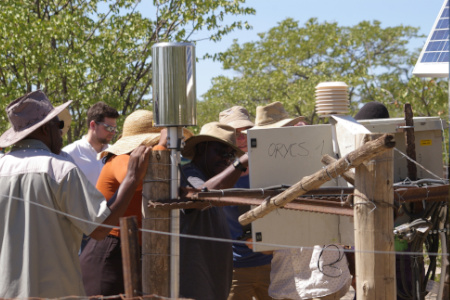
A scientifically sound assessment of wildlife-based land use options in savannas is currently hampered by an insufficient understanding of their short and long term impacts on key ecosystem processes and services. Complex geo-biosphere feedbacks impede the understanding of the processes and there are major knowledge gaps on the full feedbacks between vegetation composition, condition and dynamics, animal behaviour, soil processes, and eco-hydrological dynamics under different scenarios of land use and climate. In close dialogue with stakeholders, ORYCS will apply a combination of field observations and experiments, remote-sensing, socio-ecological assessments, and process-based computer models to close these knowledge gaps. Immediate and final results will be disseminated, exchanged and discussed with stakeholders, land-use experts, students and researchers during summer schools, national stakeholder workshops and trainings, the scientific exchange program, German-Namibian tandem research projects and one international outreach workshop. These steps will largely advance our understanding of the potentials and risks associated with wildlife-based land use for the conservation of biodiversity, ecosystem functioning and services and rangeland livelihoods. ORYCS thus aims for a reliable scientific basis for recommendations on sustainable use and management of wildlife in savanna rangelands under current and future climatic conditions and atmospheric CO 2 concentrations.
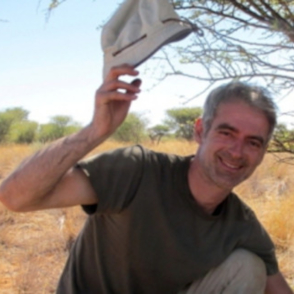
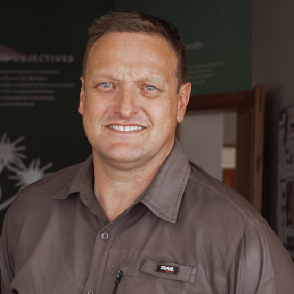
NUST-Biodiversity Research Centre | involved in workpackages 2,1 and 6


Etosha Heights Private Reserve

Etosha National Park

Hobatere Communal Conservancy
Mr. John Kasaona (IRDNC)
Mr. André Nel (Etosha Heights)
Mr. Harald Marggraff (Rangeland expert)
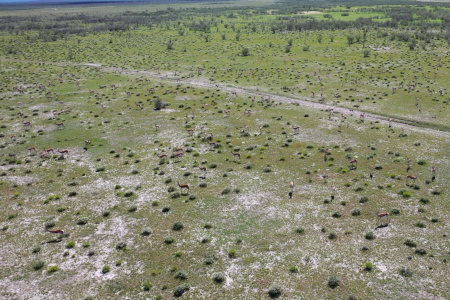
Coordination, Wildlife modelling and Synthesis
The overarching goal of WP1 is the synthesis of results from all ORYCS WPs and to ensure the overarching project success. This is achieved by means of well-balanced project management,coordination and capacity building. On the scientific side, WP1 will use a model-based approach to integrate knowledge from ORYCS and beyond. Therefore, WP 1 will develop an agent-based animal-functional-type model that will describe wildlife populations in space and time and allow for an assessment of different management and climate scenarios on wildlife and ultimately also on vegetation dynamics and diversity.
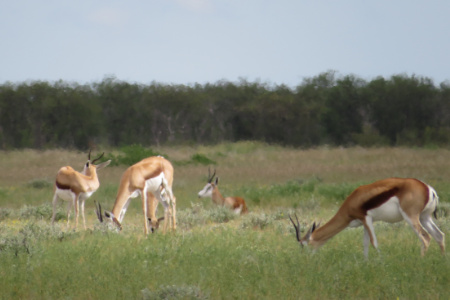
Wildlife Movement and Biodiversity
WP2 explores feedbacks between wildlife-based land-use options (national park, game farm and communal conservancy), wildlife movements, vegetation, and related ecosystem services focussing on biodiversity. Our key objectives are to: (i) analyse historical and new data on different wildlife-based land-use options and wildlife movements to understand wildlife-predator-vegetation feedbacks (ii) understand the role of vegetation distribution, nutritional values and structural diversity for wildlife movements (iii) investigate the link between wildlife-vegetation feedbacks and human-wildlife conflicts (iv) assess the impacts and potential risk of wildlife land use for biodiversity conservation (v) design policy briefs and training materials for sustainable wildlife-grazing practice
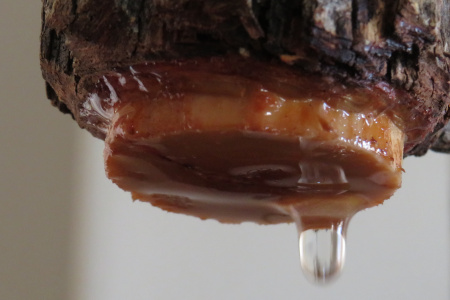
Scale-crossing water fluxes
The focus of WP3 is set on water fluxes and the controls that vegetation, climate and soil exert over ecohydrological processes. This includes the influence of patch utilization by large wild herbivores on soil compactness, vegetation structure, woody plant architecture and plant functional attributes. We use tree sap flow and canopy interception measurements, from both experimental manipulations and observational studies; we determine groundwater recharge rates and we obtain precipitation trends from tree ring analysis. We plan to upscale these water related processes to different scales.
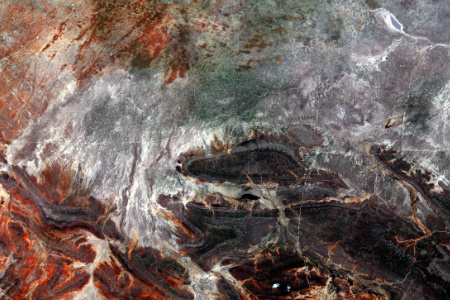
Eco-hydro-geomorphic remote sensing
The aim of WP4 is to understand long-term changes in savanna ecosystems, and to provide useful information on how they can best be managed and protected. We use state of the art remote sensing tools -- running from ground-based sensor networks and drone flights all the way up to regional climate models and rainfall maps -- to study short- and long-term changes in the local and regional environment. Our detailed local studies help to validate long-term and regional trends in temperature, rainfall, and vegetation, and give us important insights into how the ecosystem responds to change.
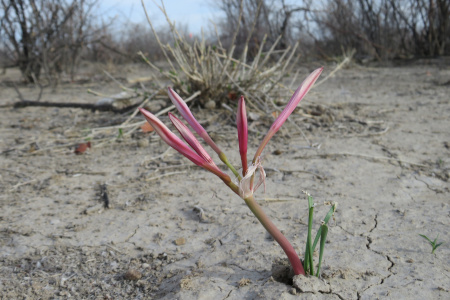
Ecohydrological modelling of plant diversity
WP5 will provide fundamental knowledge on the impacts of wildlife on plant functional diversity and resulting ecosystem function and services under global change. It will use a process-based, ecohydrological modelling approach (EcoHyD) to assess the coupled dynamics of water and vegetation under different scenarios of wildlife composition. This approach integrates empirical findings from other WPs within ORYCS and allows for understanding and quantifying the link between wildlife management, plant diversity and ecosystem functions (e.g. water fluxes, biomass) and services (e.g. carbon storage, water provision, forage production).
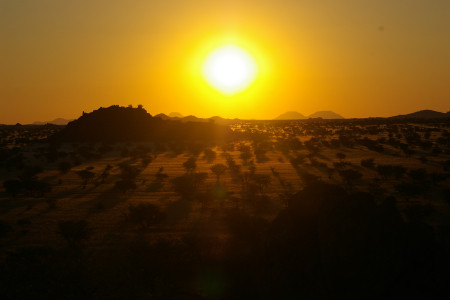
Social-ecological assessment
WP6 will conflate the crucial social-ecological components of ORYCS in order to disentangle the heterogeneous motivations for action and the existing indigenous and local knowledge as well as the specific knowledge demands of stakeholders. Stakeholders are considered from the local to the national level. Motivations, challenges and conflict areas will be analysed, including their socio-economic, cultural and institutional drivers. This facilitates the mutual understanding of stakeholders’ perspectives on interdependencies between wildlife-based management and ecosystem services and the development of strategies for an adapted wildlife-based management including constructive forms of conflict regulation.
Fickel, T., Lütkemeier, R., Hummel, D. (2020) Biodiversitätskonflikte. Eine sozial-ökologische Perspektive. W & F Wissenschaft und Frieden, 38 (4), 26-29, https://wissenschaft-und-frieden.de/artikel/biodiversitaetskonflikte
Lütkemeier, R., Mbidzo, M., Liehr, S. (2021) Water security and rangeland sustainability: Transdisciplinary research insights from Namibian-German collaborations. South African Journal of Science, 117(1/2), Art.# 7773. https://doi.org/10.17159/sajs.2021/7773
Lütkemeier, R., Kraus, R., Mbidzo, M., Hauptfleisch, M., Liehr (2021) Stakeholder attitudes towards wildlife-based land use in Namibia’s Kunene Region. Joint XXIV International Grassland Congress and XI International Rangeland Congress (IGC-IRC2021) Proceedings. Nairobi, Kenya. Full Paper, https://uknowledge.uky.edu/cgi/viewcontent.cgi?article=4268&context=igc
Broekman, M.J., et al., Blaum N., et al., Hauptfleisch M., Hering R., et al., Jeltsch F. et al. & Tucker, M. (2022) Evaluating expert-based habitat suitability information of terrestrial mammals with GPS-tracking data. Global Ecology and Biogeography, 31(8), 1526-1541, https://doi.org/10.1111/geb.13523
Atmani, F., Bookhagen, B., Smith, T.T. (2022) Measuring Vegetation Heights and Their Seasonal Changes in the Western Namibian Savanna Using Spaceborne Lidars. Remote Sensing, https://doi.org/10.3390/rs14215427
Hering, R., Hauptfleisch, M., Jago, M., Smith, T.T., Kramer-Schadt, S., Stiegler, J., Blaum, N. (2022) Don't stop me now: Managed fence gaps could allow migratory ungulates to track dynamic resources and reduce fence related energy loss. Frontiers in Ecology and Evolution, https://doi.org/10.3389/fevo.2022.907079
Hering, R., Hauptfleisch M., Kramer-Schadt, S., Stiegler, J., Blaum, N. (2022b) Effects of fences and fence gaps on the movement behavior of three southern African antelope species. Frontiers in Conservation Science 3: 959423, https://doi.org/10.3389/fcosc.2022.959423
Maestre F.T., et al., Blaum N., et al., Jeltsch F., et al., Gross N. (2022) Grazing and ecosystem service delivery in global drylands. Science 387: 915-920, https://doi: 10.1126/science.abq4062
Reinhard, J., Geissler, K. & Blaum, N. (2022) Grass and ground dwelling beetle community responses to holistic and wildlife grazing management using a cross-fence comparison in Western Kalahari rangeland, Namibia. Journal of Insect Conservation 26: 711-720. https://doi.org/10.1007/s10841-022-00410-6
Szangolies, L., Lohmann, D., Hauptfleisch, M., Jeltsch, F. (2023) Balanced functional herbivore composition stabilizes tree-grass coexistence and productivity in a simulated savanna rangeland ecosystem. Journal of Rangeland Ecology & Management 90: 208-220, https://doi.org/10.1016/j.rama.2023.05.001
Berry, P. E., Dammhahn, M. & Blaum, N. (2023) Keeping cool on hot days: Activity responses of African antelope to heat extremes. Frontiers in Ecology and Evolution. https://doi.org/10.3389/fevo.2023.1172303
Irob, K., Blaum, N., Baldauf, S., Kerger, L., Strohbach, B., Kanduvarisa, A., Lohmann, D., & Tietjen, B. (2022) Browsing herbivores improve the state and functioning of savannas: A model assessment of alternative land use strategies. Ecology and Evolution, 12, e8715. https://doi.org/10.1002/ece3.8715
Irob, K., Blaum, N., Weiss-Aparicio, A., Hauptfleisch, M., Hering, R., Uiseb, K., & Tietjen, B. (2023) Savanna resilience to droughts increases with the proportion of browsing wild herbivores and plant functional diversity. Journal of Applied Ecology, 00, 1–12. https://doi.org/10.1111/1365-2664.14351
Lütkemeier, R., Kraus, R., Mbidzo, M., Hauptfleisch, M., Liehr, S., Blaum, N. (2023) A qualitative exploration of conflicts in human-wildlife inter-actions in Namibia’s Kunene Region. Diversity Diversity 15(3): 440. https://doi.org/10.3390/d15030440
Hendler R, Herkenrath T, Shikangalah R, Blaum N & Geissler K (2023). Allometric relationships between sapwood area and shrub dimensions for 6 common Southern African savanna bush encroachers: universal or species-specific? Ecohydrology 17:e2609. https://doi.org/10.1002/eco.2609
Irob K, Blaum N & Tietjen B (2024). Navigating uncertainty: Managing herbivore communities enhances Savanna ecosystem resilience under climate change. Journal of Applied Ecology. https://doi.org/10.1111/1365-2664.14573
Herkenrath T, Blaum N, Roth J, Shilula K & Geissler K (2024). Hungry herbivores and thirsty plants: Browsing wildlife shape savanna tree transpiration independently of water use strategies. Functional Ecology. https://doi.org/10.1111/1365-2435.14499
#01 | The ORYCS project – a German-Namibian research cooperation
#02 | Spatio-temporal dynamics of groundwater quality in the Etosha region
#03 | How antelope respond to heat in an arid savanna
#04 | Drivers of water cycles
#05 | How woody plants impact the selection of sites used by Springbok
#06 | Savanna response to management strategies - A simulation model approach with climatic extremes
#07 | Ungulate movements across the red-line: A case study
#07 | Details on ungulate movements across the red-line
#08 | Animal movement behavior
#09 | Effects of wildlife on soil and vegetation
#10 | Mapping vegetation with remote sensing
#11 | Mapping water with remote sensing data
#12 | Cumulative impact of fences and land use on elephant movement
#13 | Farmers’ perception of wildlife - How do farmers feel about certain wildlife species?
#14 | How to bring knowledge and policies to farmers
#15 | Science-led perspectives to guide wildlife-based strategies of land use -
Insights from a German-Namibian research cooperation
ORYCS is supported by the DLR Project Management Agency

SPACES 2 training ...with loads of interesting workshops and short courses (also from ORYCS) here
SPACES II Newsletter (feat. ORYCS) find the latest SPACES II Newsletter here
EMSAfrica Find more about them here
SALDi Find more about them here
ASAP Find more about them here
SALLnet Find more about them here
SASSCAL Find more about them here
NamTip Find more about them here
Namibia Conservation - Covid Chronicles Check this conservation related youtube show feat ORYCS (eps. 37ff) here
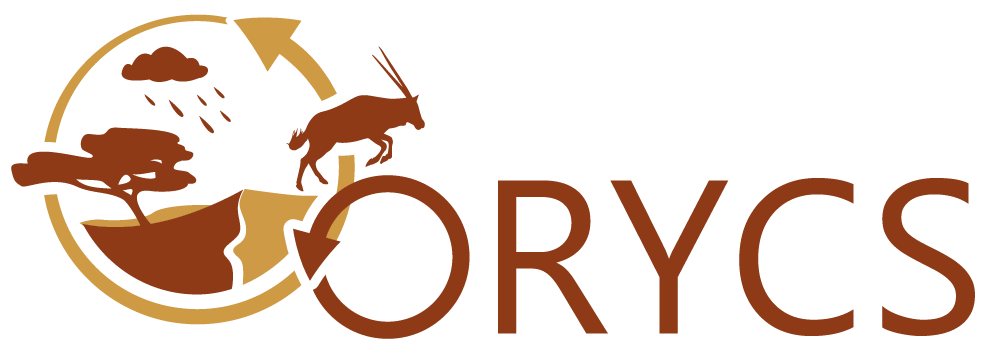
OUR ADDRESS
The project coordination is organized from Potsdam, Germany. Ask us, if you are looking for a specific contact+49 331 977 -1959
Plant Ecology and Nature Conservation | University of Potsdam | Zeppelinstraße 48a | 14471 Potsdam